- Home
- Peter Matthiessen
Sal Si Puedes (Escape if You Can) Page 3
Sal Si Puedes (Escape if You Can) Read online
Page 3
Roughly 250 people, mostly volunteer staff and their families, lived and labored at La Paz at any one time from the early 1970s. It boasted a fully equipped community kitchen and a dining area where residents and visitors gathered to share meals. Cesar believed in working hard and in celebrating life. He brought people together to break bread, especially for union observances and during Easter, Thanksgiving, and Christmas holidays, when many volunteers couldn’t get home. Passover seders were held. Residents gathered early in the morning outside Cesar’s home to sing “Las Mañanitas” on his birthday, March 31, which the movement celebrated as Founder’s Day, since it marked the day in 1962 when he began building what would become the UFW.
There was a multiacre organic community garden that raised much of the community’s produce. Cesar could get away from the office and experiment with organic growing in the hopes of offering alternatives to the craziness of pesticides.
La Paz was also a personal refuge, a spiritual harbor for him and movement staff, offering respite from tough struggles in the fields and cities. The world outside La Paz could pose serious personal dangers.
Leaving his house each morning, Cesar passed through a high chain-link fence encircling his large yard, erected in 1971 after one of the two credible threats on his life that the union received in that decade. I was with him both times. That year, agents of the U.S. Bureau of Alcohol, Tobacco and Firearms notified the UFW that a few grape growers had put up money to have him killed. Agents identified the hit man but not the growers. Cesar went on the road, never sleeping in the same place twice. The California Highway Patrol later arrested the hit man near Salinas, only a short distance from where Cesar had been the day before, for completing another murder for hire.
After a few weeks on the road, Cesar told Helen, “I’m not going to run. I’m not a coward. I have not done anything wrong except fight for workers’ rights. I’m going back home. I don’t care if they kill me. If that’s God’s will, let it be done.” He returned to La Paz. That’s when the chain-link fence went up—and Cesar’s security detail got beefed up.
The union’s executive board ordered Cesar to accept the detail, much to his chagrin. This wasn’t the Secret Service; the “guards” were farm workers and UFW volunteers. Cesar forbade them from carrying weapons. He rebelled against the lack of privacy and restrictions on his personal freedom, sometimes ditching the guards if he could.
Cesar was given two magnificent German shepherds, which he trained and named Boycott and Huelga (Strike). He took them almost everywhere. They became his best friends. He credited the dogs with his conversion to vegetarianism and interest in animal rights. The dogs would travel with us in the well of a late-1960s Ford Country Sedan station wagon, with Cesar in the right front passenger seat. A “chase car,” one of the union’s old four-door Plymouth Valiants, followed. I’d sit in the back seat of the station wagon. In warm weather, the dogs would sometimes breathe and drool down my shirt collar.
There were periods during strikes, organizing, or political campaigns when our little troupe—Cesar, the guards, and I—was almost constantly on the road, grueling weeks and months of stressful days and constant travel when I saw Cesar more than his wife did.
Sometimes he appeared to me as a solitary figure in the midst of constant company, occasionally even lonely during long periods of separation from family, a man almost resisting his condition. Peter Matthiessen examined this character in Sal Si Puedes, as did the director Diego Luna forty-five years later in his feature film Cesar Chavez.
The chain-link fence around Cesar’s house is still there, a reminder of perilous times.
Cesar’s critics were right in one sense: he was not a traditional labor leader. His legacy, good or bad, can’t be measured by the size of his union or the number of members it had.
Cesar’s most abiding asset was a steely determination. When setbacks occurred—and he probably had more defeats than victories—Cesar just picked himself up off the ground, dusted himself off, and went back to work. He said, “You only lose when you stop fighting.”
His obituary was written many times. A bold headline with his photo appeared on the front cover of the New York Times Magazine in 1974, asking, “Is Chavez Dead?” He was then facing the formidable combination of growers and Teamsters, whom he overcame with the passage of the farm labor law and the Teamsters’ exit from farm labor in 1977.
After witnessing Cesar in Delano at the end of his last long public fast, over the pesticide poisoning of farm workers, the late Los Angeles Times columnist Frank Del Olmo wrote, “No one who saw the 61-year-old union leader being carried into the rally where 7,000 silent union members and supporters waited, then watched him sit weakly through a mass, grimacing in pain, can doubt that Chavez suffered during his self-imposed ordeal. Argue with his tactics, but the deep sincerity of his beliefs is obvious. . . . It’s hard to argue with someone who is willing to risk death to make a point.”
In an era when so few people in public life seem willing to risk their livelihoods, much less their lives, on principle, the life of Cesar Chavez stands out with even greater moral purpose. Cesar often said that if his movement didn’t survive his death then his work would be in vain.
Under his successor as UFW president, Arturo Rodriguez, the union continues to aggressively help farm workers organize, negotiate new contracts, and win new legal protections. “The UFW’s recent history shows remarkable success in the toughest organizing job in America,” the former UNITE HERE International president John Wilhelm said. Workers recently won UFW contracts with the largest strawberry grower and winery in America, one of California’s biggest vegetable growers, three-fourths of the state’s fresh mushroom industry, one of the largest dairies in the nation, and Washington State’s biggest winery.
The UFW also won recent California laws that let farm workers use neutral mediators to hammer out union contracts when employers refuse to bargain. Thousands of additional farm workers are winning union protections.
Nearly five hundred million dollars have been paid out to farm workers in health and pension benefits.
In 2005 the UFW convinced the Republican Arnold Schwarzenegger, then the governor of California, to issue the first state regulations in the nation that protect farm and other outdoor workers from exposure to extreme heat. Although the heat rules have saved many lives, state enforcement of these standards and other good laws and regulations remains a challenge. About two dozen California farm workers have perished from hyperthermia since then.
With farm labor now overwhelmingly immigrant, Latino, and undocumented, Arturo Rodriguez forged a historic partnership with the nation’s growers to negotiate the agricultural provisions of the bipartisan immigration reform bill that the Senate passed in 2013. If passed by the Republican-led House, it would let farm workers earn legal status by continuing to work on farms, thus freeing these immigrant workers from what makes them so vulnerable to abuse. The UFW remains in the forefront of immigration reform.
Throughout the Southwest and Pacific Northwest, the Cesar Chavez Foundation carries on his vision of a movement that helps farm workers and other poor people in the workplace and the community. Paul Chavez runs it.
The foundation has built or renovated and manages nearly five thousand units of high-quality affordable housing for thousands of low- and very-low-income families and seniors in four states, most with extensive social services.
It operates Radio Campesina, a nine-station Spanish-language educational radio network that reaches five hundred thousand daily listeners in four states. Cesar started the first station, KUFW, in rural Tulare County, California, in 1983.
Thousands of farm worker, Latino, and other disadvantaged students receive after-school and summertime academic tutoring and educational services from the foundation. It also works through the National Chavez Center to tell the story of Cesar and the movement, including at La Paz, where the Chavez Foundation partners with the National Park Service to administer the C
havez National Monument. Telling Cesar’s story is now part of the park service’s mission of telling America’s story.
• • •
The job of organizing a celebration of Cesar’s life fell to a core of family members, UFW leaders and staff, friends, and former colleagues who came to help.
The director-playwright Luis Valdez—his El Teatro Campesino became famous during the 1965 Delano strike—helped guide the program and its spirit. Staff scoured convention centers and county fairs for the largest tent they could find: a 210-by-280-foot covering. Smaller tents housed guests and two hundred journalists, some from Europe and Latin America. TV news satellite trucks lined the parking lot. A mammoth public address system brought sound out another three hundred to four hundred yards.
The union worked with local police agencies and the CHP on crowd and traffic control. There wasn’t a major incident.
Parking, sanitary, and first aid facilities; religious ceremonies; and invitations to thousands across North America were arranged. Farm workers from California, Arizona, the Pacific Northwest, South Texas, and Florida chartered hundreds of buses. Thousands of workers and supporters in hundreds of communities who couldn’t come held their own services across Canada, Mexico, and the United States.
Before the public services in Delano, Cesar was brought home to La Paz for two days so family and friends could pay their respects in private. Cesar had asked his brother Richard, a journeyman carpenter before joining the UFW in the 1960s, to build his casket from plain pine lumber, reflecting how Cesar lived his life.
Mass was celebrated both evenings. People took turns all night as honor guards, standing beside the casket. At 3 a.m. one night there was a solitary feeling in the lobby of the rambling wood-frame structure where Cesar lay in repose. Tall candles burned at each end of the casket. Behind it was a large portrait of Our Lady of Guadalupe, the patron saint of Mexico. People came to sit or pray. Helen Chavez and other family members were there all night.
Cesar’s nearby office-library was open. Papers and handwritten notes on his desk were as he had left them. Someone took a short-handled hoe from a bookcase and placed it on the desk. A small metal plaque on the wooden handle read in Spanish, “Si Se Puede!” (Yes, we can!).
I took a shift, standing a few feet from Cesar. There were the same dark Indian features. His small hands were folded in front, clutching a rosary. He was almost smiling. I half expected him to sit up and talk. It was hard to believe that he was gone. He wore a simple white guayabera that he kept for special occasions. While Cesar lay in state, Irving Nichols, the funeral director, asked if Helen had a fresh shirt for him. She had Irving bring her the guayabera so she could wash it at home.
Once word spread that Cesar’s funeral would occur in Delano, people started showing up to help prepare the Forty Acres, which hosts the UFW’s Central Valley operations and the Paulo Agbayani Village, a retirement home that Cesar built for displaced Filipino American farm workers who began the Delano Grape Strike in 1965. The Forty Acres was also where Robert Kennedy joined Cesar at the end of the latter’s first fast, for nonviolence, in 1968, where grape growers came to sign the historic union contracts in 1970, and where Cesar fasted again in 1988.
Hundreds arrived with their hoes, rakes, shovels, string trimmers, and home lawnmowers. Neighbors, including a local unionized rose grower, brought tractors to disk and scrape the barren soil. The city of Delano sent dump trucks, scrapers, and water trucks. Local restaurants and businesses donated food and drinks. Farm workers sewed five thousand union flags. Unionized electricians wired the tents for lighting. Unionized communication workers installed phone lines for the press and the public.
Farm worker homes across the valley displayed black-eagle UFW flags. Workers holding such flags lined overpasses at small towns along Highway 99, to be seen by car caravans traveling to the services.
People kept filing by the open casket in the big tent, thousands upon thousands of them during an all-night vigil. As buses arrived, the line to pay respects snaked down the main aisle from the casket, which was in front of a makeshift altar. Helen and other family members were up all night, greeting and receiving condolences.
By late evening, the reporters and dignitaries had left. I watched people file past in the hours after midnight. Farm workers with small cameras asked permission to take photos as they passed the casket. People left religious candles, mementos, and flowers. Parents carried newborns and sleeping toddlers so they could be a part of history. Farm workers, some weeping with hats in hand, paused before the casket to pray briefly and make the sign of the cross.
I remembered twenty years earlier, when a reporter followed Cesar for a few days to union marches and rallies. Workers and their family members came up to him for autographs on leaflets, flags, and shirts. Fathers used little Instamatic cameras to take pictures of Cesar with their children. Later, during an interview, the reporter asked, “What accounts for all the affection and respect farm workers show you in public?”
Cesar hesitated, smiled his easy smile, and replied, “The feeling is mutual.”
The funeral procession the next morning went from Memorial Park in Delano to the Forty Acres. Two flatbed trucks ahead of the casket carried still photographers and TV news crews. There were 120 pallbearers, eight at a time spending three minutes carrying the heavy wood casket and bier over three miles. Police estimated that thirty-five thousand people marched. Rooftops were crowded. The elderly and the disabled were on the streets. Farm workers held framed pictures they had taken with Cesar as they marched. Students at an elementary school along the route displayed a big hand-painted sign: “Gracias, Cesar.”
Out of the crowd of more than forty-five thousand, at least twenty-five thousand could not fit into the tent. Those on the outskirts couldn’t hear the loudspeakers well. No one was upset. They improvised their own memorial services. It was the largest, most genuine outpouring of affection that most observers had witnessed. We were stunned by how far Cesar’s influence reached. All this for a man who never made more than six thousand dollars a year, never owned a home, and left no money for his family.
Following a simple graveside service, about a hundred of us buried him the next day in a rose garden at the foot of the big hill at La Paz that he used to climb before dawn to watch the sunrise as he practiced his meditation and yoga.
Someone once asked how a nice Jewish boy like me got hooked up with the likes of Cesar Chavez. I loved history, I replied, having majored in American history at UC Irvine. But after meeting Cesar, getting to know him, and understanding what he was trying to do, I decided it would be a lot more meaningful to be part of history than just to read about it.
I earned two college degrees after starting with the UFW in the late 1960s. But like thousands of others, I learned the most important lessons in my life from working with Cesar and his movement: lessons about commitment and self-sacrifice, about being part of a cause that’s bigger than you are—about what it means to be a man.
Those lessons are as relevant today as when Peter Matthiessen wrote this book about Cesar Chavez, forty-five years ago.
MARC GROSSMAN
FOREWORD
Once upon a time there were duels; nowadays there are clashes and pitched battles.
—MICHEL DE MONTAIGNE, “On Cowardice”
“THE rich have money—and the poor have time.” Those were the words of Cesar Chavez in 1991, two years before his death. Is it sheer fancy to suggest that this sentence alone summarizes the dominant concerns of his life? Chavez’s life was defined by patience. Patience was his weapon against the grape owners and the Teamsters, against the abuse of the downcast. He had plenty of patience, much more than a normal person, and it was proven in his nonviolent marches, fasts, and petitions. “We don’t have to win this year or next year or even the year after that,” he told his followers. “We’ll just keep plugging away, day after day. . . . We will never give up. We have nothing else to do with our lives except to continu
e in this nonviolent fight.”
Of course, there is such a thing as too much patience. How long will it take for Chavez’s message to penetrate the American psyche? He’s been dead for almost a decade. His name and face adorn schools and public parks. He pops up in advertisements for Macintosh computers, along with John Lennon and the Dalai Lama—“Think Different”! But these ghostlike appearances are empty of all ideological significance: it’s a tame Chavez, not the quixotic knight he was; a brand name, as disposable as any celebrity in Hollywood.
My generation is too young to have witnessed Chavez’s odyssey from obscurity to legend. My appreciation for his courage and forbearance came indirectly. I learned about him from books and documentaries. Every reference to him was cloaked in an aura of sanctity. But as with most saints, it was hard to figure out exactly what he had done on the road to beatitude. No doubt Chavez was the most important Hispanic American political figure of the twentieth century. But for someone like me, born at the apex of his career, outside the United States, it was almost impossible to lift him from the junk box where icons are stored away and reinsert him into history. Somehow Chavez the man had become Chavez the statue: pigeons sat motionless on his nose and hands, his beautiful bronze skin corroded by the passing of time.
How can he be rescued from this eclipse? Do his words still have an echo? Have we lost the capacity to appreciate not just a fighter but also a true duelist, a crusader capable of reevaluating our preconceptions of the world? What is meaningful about him today? Can his message still speak to us? Americans are obsessed with the radicalism of the 1960s, as epitomized by Malcolm X and the Black Panthers. This obsession is concurrent with a Latin boom, a sudden embrace of Latino music and culture, north of the Rio Grande. And yet most Americans couldn’t care less about Chavez—especially Latinos. The new Hispanic pride is a profoundly middle-class product. It replaces radical politics with consumerism, the gun with the Gap, hunger strikes with Taco Bell. Chavez’s face on a billboard goes down easier than any of his injunctions about courage, resilience, commitment. Chavez is not alone: other Latino activists have been shelved, as well, from Bernardo Vega and Jesús Colón to Dolores Huerta, Rudolfo “Corky” González, and Reies López Tijerina. Even Arthur Alfonso Schomburg, the black historian whose Puerto Rican identity was crucial to his work and his life, remains a forgotten oddity.

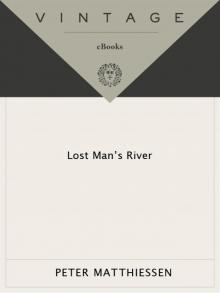 Lost Man's River: Shadow Country Trilogy
Lost Man's River: Shadow Country Trilogy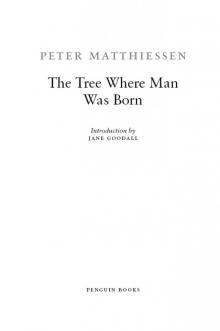 The Tree Where Man Was Born
The Tree Where Man Was Born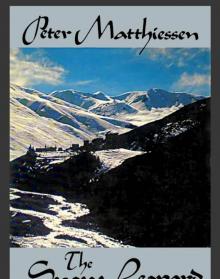 The Snow leopard
The Snow leopard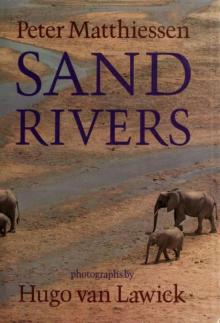 Sand Rivers
Sand Rivers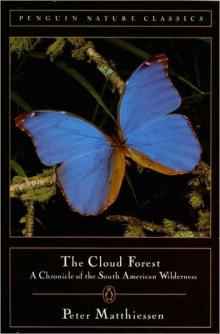 The Cloud Forest
The Cloud Forest Sal Si Puedes (Escape if You Can)
Sal Si Puedes (Escape if You Can) Far Tortuga
Far Tortuga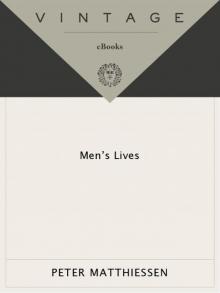 Men's Lives
Men's Lives On the River Styx: And Other Stories
On the River Styx: And Other Stories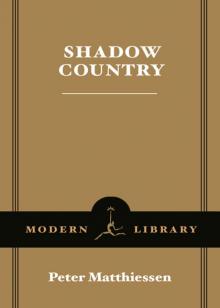 Shadow Country
Shadow Country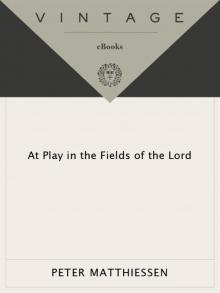 At Play in the Fields of the Lord
At Play in the Fields of the Lord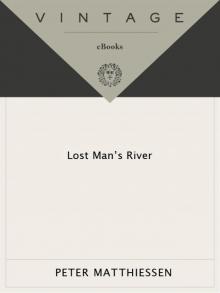 Lost Man's River
Lost Man's River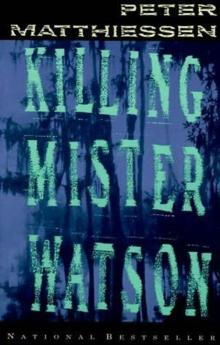 Killing Mister Watson
Killing Mister Watson On the River Styx
On the River Styx